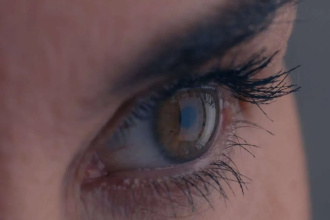To Infinity Mirrors and Beyond: Instagram and the Devolution of Art
For the last decade now, social media has slowly but surely become enmeshed in our lived experience. For better or for worse, our phones are an extension of our personhood, and with this, their cameras have become the means through which we explore our identity and reality. Any moment which is aesthetically pleasing we scramble to capture and upload. We do it, as they say… for the gram.
No cultural industry has been left unturned by this phenomenon either, not even the art world. Wherever people go, the gram follows. Crowds hoard in museums and galleries snapping selfies at every chance, and contemporary art exhibits are becoming more palatable and aesthetically pleasing, so as to cede to the “Insta-crowd.” Art in the contemporary market must now grapple with the ever-growing demand for Instagrammable content.
View this post on Instagram
Take the wildly successful Infinity Mirrors exhibition by Yayoi Kusama at the AGO last year. The installation has been visited by over 5 million people as it travels across the world, and was so succesful, in fact, that the AGO purchased a permanent Infinity Mirrors room for its collections. The exhibition, no doubt stunning in its own right rose to popularity predominantly as a result of its “instagrammability.” Jenny Bukuroshi, a Toronto based curatorial assistant says the visual appeal that draws in this certain Instagram crowd is not necessarily vapid or bad, it can, in fact, help to democratize art. “I had the chance of speaking to the curator of Infinity Mirrors at the AGO and we discussed that one positive outcome of the relationship between Instagram and the exhibition was that it brought in a new demographic of visitors. People who had never really entered the AGO were finally enticed to. The majority of these ‘new visitors’ did not know anything about the impact of Kusama as an artist, so there’s a chance they left having acquired some knowledge.”
But a new emerging experience which blurs the line between art and merely a commodified immersive aesthetic experience is complicating this. The ‘pop-up experience’ is the new hybrid result of the Instagrammification of the gallery and represents real change happening in the art world right now. In the last year, there has been an influx of these curated pop-up spaces in Toronto. HappyPlace, which popped up on Queens Quay last fall, promoted as “an interactive pop-up experience exuding all things HAPPY,” was comprised of rooms clad with seven-foot candy-filled stilettos, walls made of gumball machines and vibrant neon yellow bathtubs, all teeming with Instagrammability.
View this post on Instagram
Eye Candy which recently appeared on Queen West is described as a “family-friendly experience that brings together the vibrant, the inspired, and the epic… with one shared mission: To fuel imagination and embrace the adventurous bone that lives inside all of us.” The installation invites guests to “get ready to laugh, smile, and take a ton of selfies!” in rooms filled with cherry blossoms, neon lights, a fake private jet interior and optical illusion walls.
Meanwhile, the latest is FunHouse which just debuted days ago on Queen West. Marketed as “an immersive experience brought to life by visual artists from across Toronto, with featured environments inspired by local musical artists.” The pop up promises to “change the way people interact with art, by offering a multi-sensory experience that invites people to step into a new world.”
View this post on Instagram
But what are these newfound art installations really all about? Founded on the principle of carefully curating experiences for maximum selfie potential, their mandates of multi-sensory experiences and imagination ring hollow. Bukuroshi maintains they should not be confused with legitimate artistic works even though Instagram tends to flatten them all into the same visual experience. “I would say that the Instagrammable aspect of Kusama’s infinity mirrors is merely a symptom of the visual quality of her work. Whereas Happy Place and the like are made for the sole purpose of infiltrating Instagram. Kusama’s earliest infinity room, Phalli’s Field, was realized in 1965 – it existed in the pre-internet age and surpassed the test of time, as it is still considered a prominent work.” Amanda Hess at the New York Times tries to tease out this distinction, if not art exhibits, what are these pop-ups and how do we define them? She writes “by classifying these places as experiences, their creators seem to imply that something happens there. But what? Most human experiences don’t have to announce themselves as such. They just do what they do. A film tells a story. A museum facilitates meaning between the viewer and a work of art. Even a basic carnival ride produces pleasing physical sensations…The most that these spaces can offer is the facsimile of traditional pleasures. They take nature and art and knowledge seeking, flatten them into sight gags and stick them to every stray surface.”
View this post on Instagram
In a larger context, Instagram “pop-ups” speak to a growing trend in regards to how art is consumed as a commodified accessory of narcissism. In the same way that a selfie in front of the Mona Lisa says more about the socio-economic status and cultural capital of its subject than it does about the artwork, the focal point of the Instagram pop-up selfie is, too, it’s subject and the implicit message is one of privilege. When an entire aestheticized experience has been curated to facilitate a visually appealing selfie, aesthetics are merely an accessory serving to frame the subject. One doesn’t walk away from an Instagram popup with a profound new perspective, or emotional response to the art, they walk away with a camera roll of new content, and this is fundamentally what makes them differ.

Cody is a Glossi Mag contributor.
He is a photography aficionado, masters candidate, fashion enthusiast, avid Ariana Grande fan and lover of all things aesthetically pleasing.






